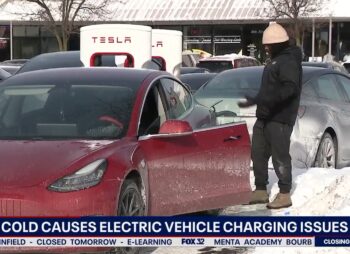
“The climate models making dire predictions of warming in the 21st century are the same models that predicted too much warming in the early 21st century, and can’t explain the warming from 1910-1945 or the mid-century grand hiatus,” Dr. Judith Curry writes in a Wednesday op-ed published in The Financial Post.
The so-called “grand hiatus” was a period from 1945 to 1975 where the world stopped warming, and even cooled slightly, despite carbon dioxide emissions rapidly rising. Scientists have thus far been unable to explain why there was no warming even though global warming theory predicts there would have been warming.
“The mid-century period of slight cooling from 1945 to 1975 ‚Äì referred to as the “grand hiatus” ‚Äì also has not been satisfactorily explained,” Curry writes. Curry is a climatologist at Georgia Tech University. She has published more than 130 peer-reviewed papers on the climate.
Climate scientists claim carbon dioxide emissions are driving the global warming trend since 1950, but they have trouble explaining warming that occurred early in the 20th century. Nearly half of the 20th century warming trend occurred from 1910 to 1945, but CO2 emissions didn’t increase enough to explain most of the warming.
[dcquiz] “In fact, the period 1910-1945 comprises over 40 per cent of the warming since 1900, but is associated with only 10 per cent of the carbon dioxide increase since 1900,” Curry writes. “Clearly, human emissions of greenhouse gases played little role in causing this early warming.”
“If the warming since 1950 was caused by humans, what caused the warming during the period 1910-1945?” Curry asks.
Curry also notes there’s evidence the Earth has been warming for the past 200 years — a period that began before human carbon dioxide emissions would have been a factor.
Like today’s 15-year “hiatus,” (the “hiatus” grows to 21 years when looking at satellite temperature data for the lower atmosphere) scientists have tried to explain the “grand hiatus” away by adjusting it out of the data to correct for “biases” in thermometers that may have caused the world to appear warmer than it was.
The highly-controversial Climategate emails leaked to the public in 2009 include a conversation between a U.S. and U.K. scientist on “correcting [sea surface temperatures] to partly explain the 1940s warming blip.”
Ironically, U.S. government scientists claimed to eliminate the 15-year “hiatus” during the 21st century by adjusting sea surface temperatures upwards — a move that doubled the warming trend during that time.
What’s unclear, however, is if these thermometer data “adjustments” will stand the test of time and continue to be validated by the scientific community. It’s especially unclear given the huge uncertainties looming over climate models and the accuracy of the global temperature record.
“The politically driven push to manufacture a premature consensus on human-caused climate change has resulted in the relative neglect of natural climate variability,” Curry writes. “Until we have a better understanding and predictive capability of natural climate variability, we don’t have a strong basis for predicting climate change in the decades or century to come.”
















